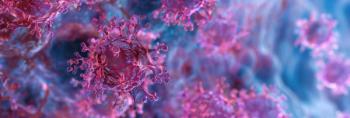
How to Improve Predictions of Melanoma Immunotherapy Response
Research identifies which melanoma patients will respond to immunotherapy drugs.
Measuring immune response in tumor biopsies during the course of early treatment can help predict which patients with melanoma will benefit most from specific
In the unique, longitudinal study involving 53 melanoma patients treated with 2 immune checkpoint inhibitors between October 2011 and March 2015, researchers found that after analyzing biopsies before treatment, there was no indication of which patients would respond.
“Before treatment, analyzing samples with a 12-market immune panel or a 795-gene expression panel, you can’t tell who will respond with any degree of certainty,” said senior study author Jennifer Wargo, MD. “On treatment, there were night-and-day differences between responders and non-responders.”
If these findings are confirmed in larger studies, it could help guide treatment with PD-1 inhibitors. During the study, researchers assembled a cohort of longitudinal tumor samples from patients, and analyzed each biopsy for gene expression and the presence of certain types of T cells and protein markers, like PD-1 and PD-L1.
Each patient was given the CTLA-4 inhibitor ipilimumab (Yervoy). Biopsies were conducted, when feasible, after the second or third treatment, and at progression. Clinical benefit was defined as either absence of disease, tumor shrinkage, or stable disease for at least 6 months.
The results of the study showed that 7 of 53 patients (13%) had a clinical benefit. Although there were no immune biomarker differences between responders and non-responders before treatment, the presence of killer T cells was significantly higher in the tumors of responders after treatment began.
For the remaining participants, they proceeded to treatment with the PD-1 inhibitor pembroluzimab (Keytruda). The results of that portion of the study showed that 13 out of 46 patients (28%) responded.
Before treatment began, there were 3 immune makers slightly elevated in responders compared with non-responders, but values overlapped the 2 groups. There were profound and highly statistically significant differences found between responders and non-responders in almost all of the 12 immune markers in the early anti-PD1 on-treatment biopsies.
This included the density in the tumor of killer CD8 T cells, CD5 helper T cells, and CD3 T cells, which also help assist killer cells, as well as the presence of PD-1, PD-L1, and the immune checkpoint molecule LAG-3, according to the study. During the study, researchers collected tumor samples, when technically feasible and safe to perform, at multiple time points after written informed consent was obtained under IRB-approved protocols.
The findings indicated that it could be used for treatment or additional research to help better understand how melanoma responds to, or resists treatment.
“We could start by treating with anti-PD1, do an early on-treatment biopsy and, based on that, either continue or add ipilimumab or another agent,” Wargo said.
This strategy could potentially more accurately apply these drugs to patients who will benefit from them, and avoid the cost and potential side effects for patients who won’t benefit and need alternative therapies.
The results of the gene expression panel showed significant differences between responders and non-responders, only at the on-treatment biopsy for anti-PD1. There were significant differences found in 411 differentially expressed genes in responders.
In the study, most of the differences involved increased expression of genes involved in immune response among the responding patients. There were only 6 genes found to be lower in responders, including the vascular endothelial growth factor (VEGF), which is involved in angiogenesis.
Authors noted that the findings suggest a targetable mechanism for resistance to treatment. Currently, anti-PD1 therapy is being tested with VEGF inhibitors in clinical trials. Researchers also found potential mechanisms of therapeutic resistance to PD-1 based therapy through defects in interferon signaling and altered antigen processing and presentation.
An additional paper will more fully report the genomic results.
Newsletter
Stay informed on drug updates, treatment guidelines, and pharmacy practice trends—subscribe to Pharmacy Times for weekly clinical insights.







































































































































































































